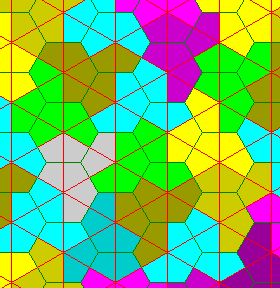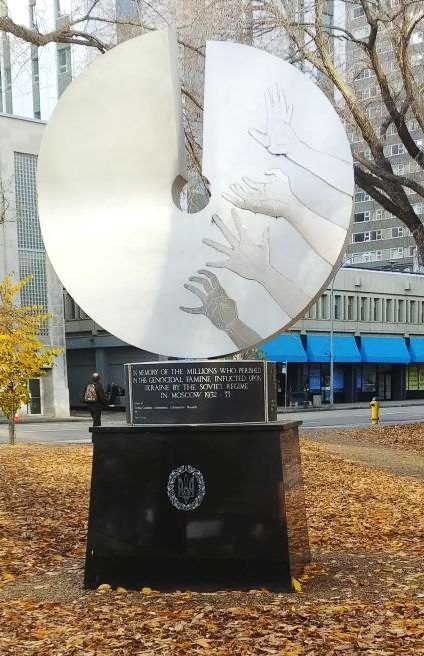|
Recent Updates:
In my page of featured
images, I've now added an image which brings together the
ordinary Tangram, the much less well-known fifteen-piece Tangram,
and the Ostomachion, which is a puzzle similar to the Tangram, but
of Western origin, together in one place perhaps for the first time
on the whole Internet!
A series of pages
discussing the history of the 35mm SLR camera has been added to this
site; some of its prececessors are also mentioned, such as the
Ermanox and the Leica.
A new Mersenne prime has been discovered, and this
fact is reflected on my pages here.
The page about the game of
Chivalry, and the related games
Camelot, Grand Camelot, Cam, and Inside Moves, as well as King's Court,
Chinese Checkers, Halma, Hexagony, Reversi, and Ploy, among others,
has been updated, particularly with respect to its coverage of Inside
Moves.
A new page has been added, concerning the 19th-century
game of The Siege of Paris.
The page about three-player
variants of Chess has now had a diagram and a description of the most
common recent three-player variant of Chess added to it, as well as some
other information. Also, a new variant of Chess, which uses the regular
board and men, but in which the Queen's move is changed back to its ancient
value of only one square diagonally, which is designed to make checkmate
easier, and therefore more common, is now described both on
the page about
Dynamic Scoring,
and the page about the variant
Winning Chess.
The page about Aperiodic Tilings
Within Conventional Lattices has been updated with the addition of the
news that an aperiodic tiling of the plane by just one tile has now
been discovered! An image of part of this tiling is shown below:

A further update to this page has been made, concerning
the revised tiling, involving a new shape called the Spectre, which constitutes
a tiling based on a true aperiodic monotile, as the previous one required both the shape called
the Hat and its reflection.
The page on The Mysteries of the Dodecahedron
has been updated to include a diagram which shows explicitly how one particular matrix
form for the Golay Code is related to the icosahedron.
Recently, there was added
a new page giving a history of computers in general, and the
microcomputer revolution in particular. This page has now been considerably expanded,
with the addition of numerous illustrations, and it has been split into several
pages because of this. And, since this was first announced, additional illustrations have
been added along with descriptions of more computer systems of the past which I have
thought to be of significance.
Now included among the items mentioned on these pages are:
the Antikythera Mechanism and the Whirlpool Aero Cable Car (not
a computer, but noted for its historical significance as being associated with the famous
computer pioneer Torres y Quevedo),
along with the IBM 305 RAMAC, which introduced the hard disk to the world, and a type
of computer that is nearly forgotten now, the Digital Differential Analyzer;
the Control Data 6060 Remote Calculator, a large additional
assortment of supercomputers, which now have their own
page, the HP 9845, an early desktop computer with 3D graphing
capabilities, the Symbolics 3600 computer, and the
GRiD Compass computer (and covering that computer
gave me an excuse to include a couple of NASA photographs featuring some famous stars of
stage and screen; some additional TV stars - including one who was also in the
movie - also appear now from an advertisement for the IBM Personal System/2 on
another page). And these new items, of course, are alongside
many other computers.
On my page about the Korean typewriter,
having finally found significant new information about the mysterious Selectric element for
typing in Korean, I have added this information at the bottom of that page.
Also, on my page about large keyboards,
I've recently added a diagram of the keyboard of the Control Data PLATO terminal's keyboard,
and previously I've accompanied
the existing diagram of the Space Cadet keyboard by one of the Knight keyboard and one of the
SAIL keyboard which preceded it, and I have also included a diagram of the keyboard of the
9210 Scientific Descriptive Printer, which was used for preparing programs in COLASL to run
on the IBM STRETCH computer (the prototype of the IBM 7030). Also added are keyboard diagrams
for both the Laning and Zierler system and the Klerer-May system. As well, on my
page commenting on the keyboards for the IBM PC, I've recently added a diagram of the keyboard of
the Fujitsu Micro 16s, and previously I had added diagrams of the keyboards for the
SANYO MBC-550 computer, the Spectravideo SV-328, the Televideo TS-1603, and the Fortune Systems 32:16,
as well as replacing
the small diagram of the keyboard of the Radio Shack Model II computer with a larger one. Also,
more accurate diagrams of the appearance of the original keyboards for the IBM Personal Computer
and the IBM Personal Computer AT, as well as the IBM Enhanced Keyboard, have been added.
The page concerning Dice of Other Shapes
has been considerably enhanced, with a number of photographs, most of which have now been
moved to a page of their own, as well as a few diagrams added. These updates
have been accompanied by an update to the page on the Archimedian
Duals, to which images have also been added. And then, first a
following page has now been appended to the page about
dice of unusual shapes, featuring a systematic survey of the Archimedian duals with
a complete set of illustrations of them and of the Archimedian solids from which they
are derived, then the text of the original page was split into three pages, the original
page, one page after the diagrams of the Archimedian solids,
and another page after the page with the photographs, so that
the discussion would proceed in proper sequence.
In the section on Units of Measurement,
the page From Gold Coins to Cadmium Light had been expanded
with new images and additional text; these additions continued, until the page was split
in two, with the new content being placed in a new page
specifically devoted to coins.
Having on this site both a page discussing, at length,
measurements used by printers and a page going into
detail about unit systems used for some typesetting machines, I had finally decided that it
would also be appropriate to add a page illustrating the development of typefaces over the years.
This brief page goes very quickly over the highlights of the story
that can be found in many introductory books about printing. Subsequently, three additional
pages have been added which go into more detail about specific groups of typefaces, following
that page.
A new page has been added,
which discusses how it might be possible to design a variant of Chess which is
at once both Three-Dimensional and Hexagonal, by arranging the hexagons (or squares!)
according to the Face-Centered Cubic symmetry. A new page about
Space-Filling Polyhedra has also been added, so as
to provide more information related to the Face-Centered Cubic symmetry, in addition to
what is already provided on the page about Sphere Packing.
It has been a long time since I have updated my pages on cryptography,
but I now have two very exciting updates, concerning two cipher machines
the workings of which were declassified back in 2006. On
this page there is now a description of the KL-7
rotor machine, and on
this page there is now a description of the KW-7
electronic cipher machine.
A new page concerning the implementation
of Hexagonal Chess on a computer discusses what would seem to be one very minor and
trivial issue: how the hexagonal board should be represented. But it is seen that there are
potential pitfalls, as there are important issues to be considered, if a wide range of
Hexagonal Chess variants are to be supported.
A brief chronology of telescopes for the amateur astronomer
has been added to this page about different
kinds of telescope.
A page has been added containing a brief chronology
of the typewriter, highlighting various technical innovations in its history. Illustrations of
some of the kinds of typewriter discussed have now been added. Another thing added, to
this page, part of a discussion of extending the capabilities of the
Selectric Composer, are samples of text typed on the IBM Executive Typewriter and the IBM
Selectric Composer, and even the Vari-Typer, so that the reader can get some idea of their print quality.
That discussion continues to, and concludes on, this page, which goes step by step through
how I start from the principle of combining the capabilities of an ordinary Selectric typewriter with
those of the Selectric Composer in a single machine, and continue by adding features to overcome some of
the perceived limitations of the Selectric Composer. The pitfalls one runs into when trying to make a
single machine so versatile are exhibited, and in some cases discussed. More recently, I have added
this
page, which, as it discusses recent events with respect to video cards, is related to that
history of computers.
Do you live in Australia? This page explains why
you have a unique opportunity to prove that the Earth is not flat, after all.
My page on Floating-Point
Formats now mentions the floating-point format used by the TC-16
computer in the People's Republic of China, and by the Model 709, which was
the prototype for it, as well, which is the first format I
have encountered that does not seem to fit in my categorization of floating-point
formats as belonging to three fundamental groups.
I have now added a page about devices
used for lettering to the end of my pages about keyboards, as the legends on many
keyboards were originally drawn using such devices rather than being printed with
printer's type.
After a long period of inactivity, my pages on Map Projections have,
as their first addition of the current new series, a page concerning the conformal projection
of the world on an ellipse! And (without waiting to complete the project of updating my own BASIC
program to draw this one as well) I have also added on the following
page the Adams-Cahill conformal projection of the world on the surface of an octahedron
by means of the Dixon elliptic functions. Since then, another five pages have been added:
one on the new Equal Earth projection, one on the
Boggs Eumorphic projection, one on the
Strebe projection, and one on
perspective projections, as well as the page noted in
the paragraph below on the Dietrich-Kitada projection.
Additions have also been made to several
other pages, including the ones about the Mercator projection,
the Bonne projection,
the Mollweide projection,
the Hammer-Aitoff projection,
Lambert's Conformal Conic projection, and even
the Winkel Tripel projection. Possibly of particular interest,
my page on the Ginzburg Projection now has coverage of the closely
related Latitudinally Equal Differential Polyconic Projection, widely used for world maps
in the People's Republic of China.
Unfortunately, I now realize that there may have been errors in my
calculation of how the Dietrich-Kitada projection worked. I have corrected one, but there
is likely to be another error as well.
And now I have perhaps made the most exciting addition to the section on map
projections yet. Many years ago, at the library specializing in maps at the University I attended,
I noticed an old German book with a lot of maps in an unusual projection I hadn't seen before.
It stuck in my mind. Eventually, I learned about the Van der Grinten IV projection, and assumed that
this was the map projection I had seen so long ago. But I learned that I was mistaken. A
forum post
by a noted cartographer, on the web site of his company, noted that one Bruno Dietrich wrote an
unusual book with many thematic maps in a novel map projection, not described, and years later,
a Japanese cartographer, Kozo Kitada, assuming the projection was equal-area, as it appeared to be,
worked out what the construction of the projection must have been. The forum post described enough of
its properties that I was able, particularly with the aid of maps on-line in that projection to let me
see what I was aiming at, to also work out how that projection would have had to work.
So my site now has a page on what that map projection really was - it turns out that instead of being
a conventional projection like the Van der Grinten IV, it was equal-area - and (after a difficult
debugging session) I got my little BASIC map-drawing program to handle that projection (it may be
the second map-drawing program in existence that does so), so now I
present my web page about the Dietrich-Kitada projection.
Finally, I have added to this site a page concerning
one of the most popular mathematical subjects:

I had long delayed doing so, despite the topic being a natural for this page,
as there are many other excellent pages on this subject on the Web. At present, it is quite a modest
page on the subject, and I do expect to expand it.
|









